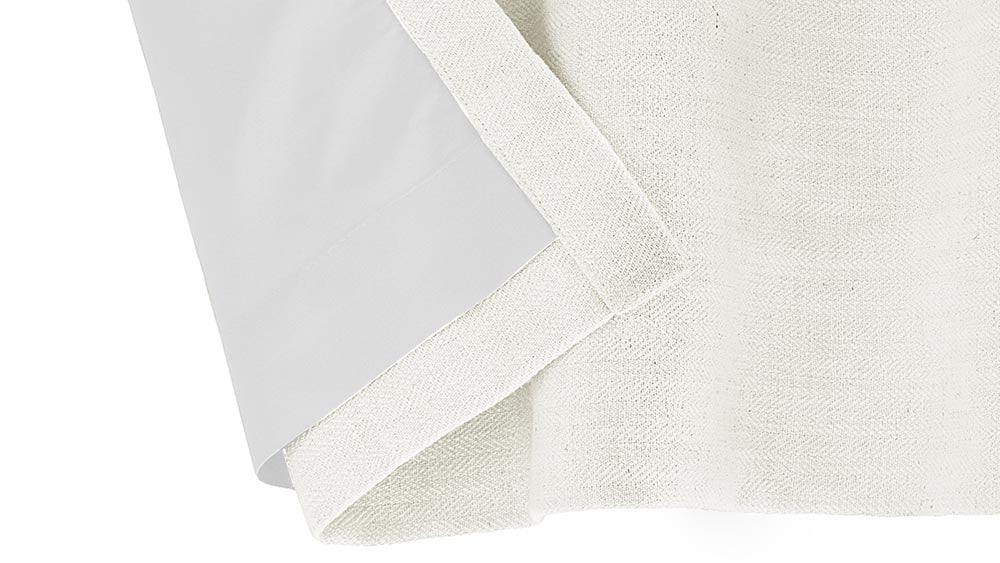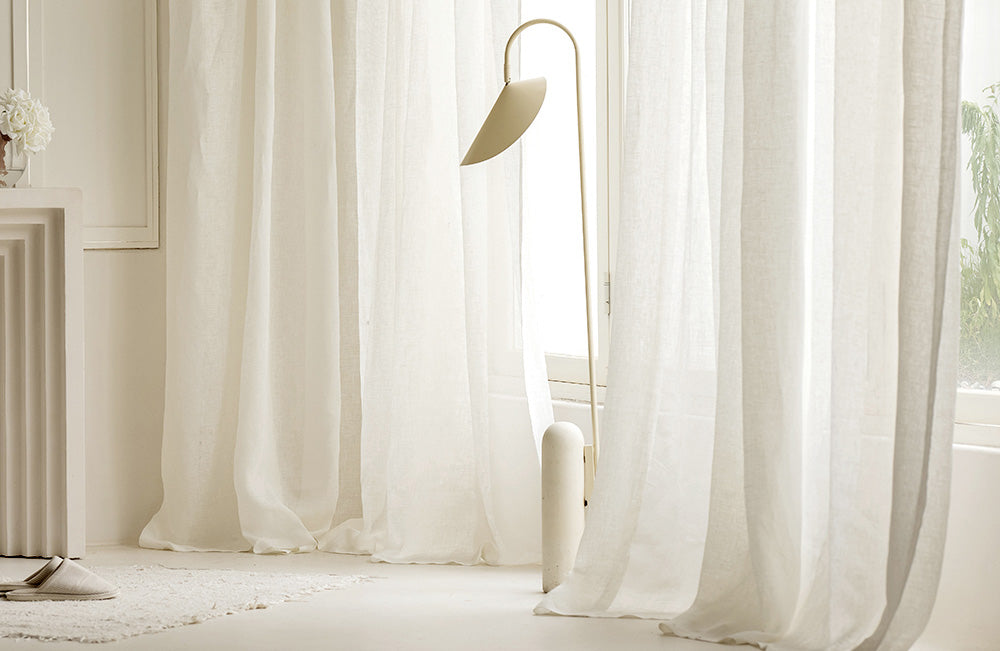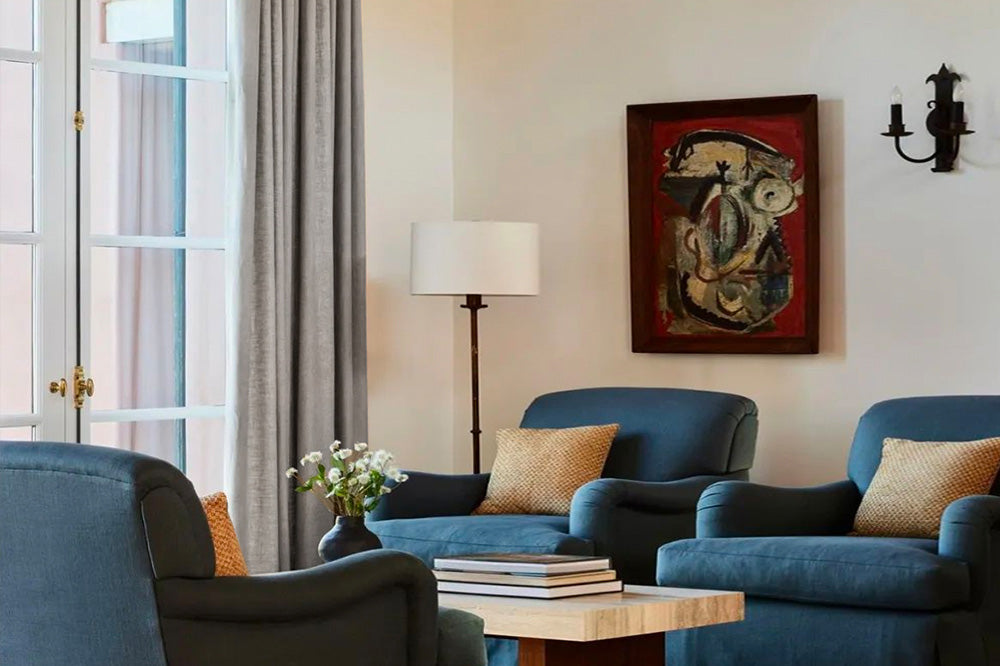Light Blocking Linen Curtains | In-Depth Overview

Light blocking linen curtains are growing in popularity as an elegant window treatment option that provides light blocking functionality along with an aesthetic feel in your home environment. Made from natural linen fibres, these curtains have a relaxed, casual aesthetic well-suited to many décor styles from farmhouse to coastal.
When coupled with a blackout curtain lining, linen takes on enhanced utility for blocking outside light. Homeowners and renters alike are finding creative ways to incorporate light blocking linen curtains into their window designs for both form and function.
Benefits of Linen Curtains
As a natural fabric made from flax plant fibres, linen offers a unique texture and a casual range of linen drape that works well for relaxed interior designs and inlaid window trims. Linen allows air circulation, yet provides an opaque surface for blocking sunlight when paired with a complementary blackout lining. Available in a range of linen pinch pleat drapes with blackout lining, light blocking linen curtains add an organic feel reminiscent of woven textiles. For homeowners seeking an informal feel or easy-going aesthetic, linen delivers the folksy character that completes the look.
Linen also wears well over time and frequent use; the fabric becomes softer with many laundering cycles. As a durable and weather-resistant choice, linen can withstand high moisture environments like bathrooms or laundry rooms. Linen fibres exhibit impressively high tensile strength while retaining shape and structure season after season. For demanding household settings subject to continual light exposure, linen offers natural advantages with blackout curtains as an enduring blackout solution.

Adding a Blackout Lining
While undyed linen allows some penetrating light to filter through the loosely woven fibres, a coordinating blackout lining effectively blocks beams and rays. Typically made from tightly constructed polyester or a poly-cotton weave, the opaque lining prohibits outside illumination from permeating the drapery panels. The blackout layer essentially reflects light back to its source instead of allowing passage to the interior space. This creates optimal conditions for mitigating glare and regulating sunlight and street lamp glare.
For media rooms, nurseries, and bedrooms, the blackout functionality helps limit external disturbances for better sleep and relaxation. The marriage of linen’s organic personality with the technical attributes of a synthetic darkening lining merges smart utility with chic style. Homeowners can have the best of both worlds – fetching linen texture with tactical shading properties. Consider coordinating colours, too, selecting a neutral blackout lining in beige or grey that complements the linen’s natural tan and ecru hues. This ensures an aesthetically pleasing pairing for an integrated window treatment design.
Linen Curtain Styles
These light blocking linen curtains shine in casual designs like tab-top curtains with pole loops, Grommet-top panels, as well as classic French pleated styles tailored with pinch pleats. Choosing a style that aligns with the room’s laidback vibe enhances cohesion. For a beach house, consider breezy tab top panels in bleached linen paired with ocean blue blackout lining. In a mountain retreat, opt for olive linen panels with ecru blackout lining and wood grommets for rustic flair. For formal interiors, pinch-pleated linen curtains offer a smart formal-casual juxtaposition when outfitted with complementary blackout lining.
Current design trends also punctuate linen with contrasting fabrics and textures for compelling accent window panels. Take inspiration from these stunning linen curtain selections:
- Vol Velvet Drapery Pleat– Combining tactile velvet, linen and blackout lining for a multi-dimensional display
- Hemp Linen Drape– Layering breezy hemp with substantial linen for a lightweight panel with blackout functionality
- Lille Linen Drapes– Showcasing crisp pleats in ecru linen framed with smart blackout lining
Each style makes a dynamic style statement perfect for blocking light as needed while projecting innate cosiness.

Installing Light Blocking Linen Curtains
Proper installation is key to cultivating the beautiful drape and forms intrinsic to linen’s flowing characteristics. Most blackout-lined linen curtain panels feature rod pockets or top headers designed to conceal hanging hardware whether drapery pole mounts or decorative crown molding attachments. Carefully pressing and steaming linen after hanging nurtures graceful shaping while removing wrinkles and creases from folds.
To fully unleash the blackout attributes, panels should extend close to window sills when closed. Optimal coverage also depends on selecting a compatible hardware system like traversing rods to completely draw panels to shade the entire windowscape. Consider floor length for bedroom curtains or generously puddled drapery for living spaces to get the most out of the light blocking linen curtains. Bolster utility by incorporating design details like overlapped side hems that conclusively seal gaps. This prevents stray beams from filtering around curtain edges when fully extended.
For supplemental rooms needing absolute darkness like media centers and nurseries, adding lined linen Roman shades or complementary lined linen drapery provides exceptional protection. Employing double coverage techniques reinforces both aesthetic and functional blackout capabilities.
Caring for Linen Blackout Curtains
The right care regimen preserves both the integrity of linen fibres and the opacity of blackout lining over numerous launderings. Following drapery panel tags for fibre-specific instructions is key. While machine washing in cool water on a gentle cycle works beautifully for many linen curtain varieties, some styles require professional dry cleaning. Avoid bleach, which yellows natural linen fibres in favour of eco-friendly oxygen-based detergents. Reshape panels while damp by hanging to dry for best results.
Steam pressing also restores linen’s beautiful structure and shape. As needed, use an iron set to medium heat without steam. Avoid wrinkling delicate blackout lining by pressing the curtain's back side only.
For retaining interlining integrity, dry clean blackout curtains every two years. This effectively removes possible buildup from smoke, grease and dust that lessens light-blocking capacity over time. By properly cleaning and caring for linen blackout draperies as directed, the window treatments maintain both good looks and practical function.

The Future of Blackout Linen Curtain Possibilities
As sustainable building gains momentum, the use of biodegradable fibres and recycled textiles continues expanding decorative fabric potential. Advancements like plant-based blackout coatings made from flax and other vegetation may soon provide renewable alternatives to petroleum-based linings. Expect stylish, eco-friendly blocked linen panels on the near horizon offering the best of cutting-edge opacity technology linked with timeless linen allure.
Conclusion
Indeed, linen’s enduring appeal, durability and versatility establish this natural fibre as a pragmatic choice - especially when merged with complimentary shading solutions. With myriad colors, textures and configurable styles now available, the decorative options for light blocking linen curtains are more stunning than ever before. By artfully incorporating linen panels outfitted with functional blackout linings, homeowners curate bedrooms, living spaces and work areas with custom shading capability. At once earthy and renewable yet smartly engineered, linen establishes itself as an advanced-generation decorative fabric. Thoughtfully framed with opaque interlinings, light-controlling linen curtains stand ready to filter and balance illumination levels beautifully.


